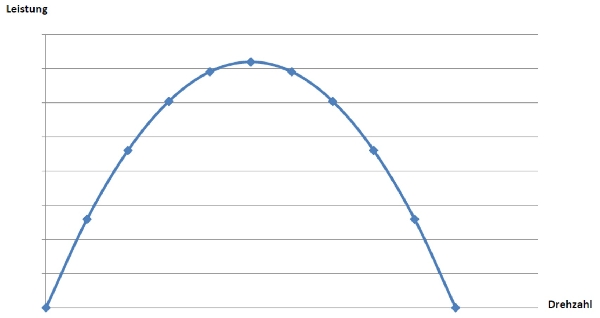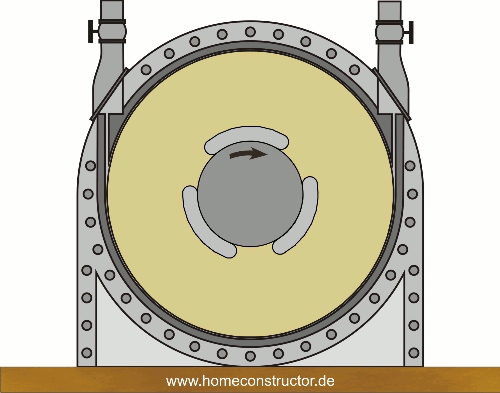Table of contents
Nikola Tesla and his inventions
In contrast to the name Albert Einstein, Nikola Tesla's name is unknown in the general population but is probably at least well known among technicians. Nikola Tesla lived from 1856 to 1943 and with some of his many inventions he revolutionized the world. For example, he invented the AC system or the radio, which are an essential part of these days.
Nikola Tesla did not only research in the area of electrical engineering, he also researched the mechanics. However, most of his inventions are unknown in public, including the Tesla turbine. This turbine was already invented at the beginning of the 20th century by Nikola Tesla and according to its inventor it should have a number of advantages compared with conventional blade turbines. Especially because of the relatively simple construction in contrast to traditional blade turbines you might think that this turbine is used worldwide, but so it isn't. Very surprising is that there are only few publicly available research results and documented functional tests about this more than 100 years old invention, although it is said to have efficiencies of more than 95 %.
So there is the question:
Is it really justified to pay the Tesla turbine so little attention?
Theoretical principles
Construction in principle
In principle, a Tesla turbine also consist of a rotor and a housing. The rotor consists of several identical discs mounted rotationally rigidly on a shaft and the discs are separated from each other by spacers of smaller diameter, so that the discs have a certain distance from each other. The discs have several holes, which are located as close as possible to the shaft. The rotor is mounted in a housing which consists of two halves. On these two halves the bearings of the shaft are mounted.
Furthermore, there are seals and one or more outlet openings. The housing part which connects the two halves has a bore hole whose diameter is slightly larger than that of the discs and it has tangential inlet openings with nozzles and valves, wherein one of the valves is always closed.
Operation
In principle, a Tesla turbine works with fluids and with the medium gas and can also be used as a pump by driving the rotor. For the following explanation of the operation a fluid is assumed as the medium. This fluid is inserted under pressure through the right valve tangentially to the discs. By the viscosity of the medium and the adhesion between the medium and the disc surface, a tangential force is exerted on the discs which sets the rotor in a clockwise rotation. In this case the fluid moves with decreasing speed on a spiral path and finally flows out through the openings (dark blue) in the axial direction. Assuming that the rotor is mounted almost without friction, the speed at the periphery of the discs with no load is almost the maximum speed of the fluid and the length of the spiral path is also maximum because there are nearly circular orbits. If the rotor is loaded and thus slowed down, the speed of the fluid also decreases and therby the number of orbits and the length of the spiral path decreases.
Basic operating characteristics / efficiency
Torque
At no rotation of the rotor, the relative speed between the medium and the discs and thus the torque is the highest. With increasing speed of the rotor and with a constant input power the relative speed and thus the torque decreases until it is zero at maximum speed. Many sites on the internet say (or at least give the impression) that the torque decreases as a function of the speed exactly linear but after long search I came to the conclusion that this is only one unproven and in my opinion false claim. In fact, the torque (rotational speed)-curve depends on several factors and only decreases linear in very good approximation:

(For more information see: Huybrechts, N. / Berten, O. / Lenclud, E.: Numerical study of a Tesla turbine. Brussels, Free University of Brussels, 2003).
The diagrams of the measurements on my Tesla turbine can be seen here.
Power and efficiency
The power at the shaft of the Tesla turbine is calculated using the formula:

Assuming that the torque decreases linearly, there is consequently at least theoretically, for the power in dependence on the speed (at constant input power) a downwardly opening parabola with the vertex at half of the maximum speed:

This means that the maximum power is reached when the effective speed of the rotor is about half the velocity of the fluid.
(The diagrams of the measurements on my Tesla turbine can be seen here.)
However, the performance and efficiency of a Tesla turbine depends on other factors, such as the rotational speed of the rotor, the diameter of the discs, the efficiency of the nozzle, the size and position of the outlet openings, the distance between the plates, the medium and its flow rate. Furthermore, the pressure and temperature of the medium, the number and thickness of the discs and the number and arrangement of the nozzles are important for the efficiency of the turbine.
The often mentioned efficiencies of a Tesla turbine up to 95 % are very unrealistic. Studies by Warren Rice showed that the rotor can achieve these high efficiencies but there are high losses while entering and leaving the rotor, which reduces the total efficiency dramatically. (Pump)efficiencies between 40 - 60 % are realistic, but the maximum is at about 65 % (Rice, Warren: Tesla Turbomachinery. Conference Proceedings of the 4th International Tesla Symposium, Serbian Academy of Sciences and Arts, Belgrade, Yugoslavia, 22. - 25. September 1991)
Conclusion
Although the efficiency of a realistic Tesla turbine is significantly lower than the predicted values, there is enough potential in this invention. A very important point, which contributes greatly to the efficiency of the turbine, is the design of an optimum nozzle and their arrangement. A major obstacle to the further development of the Tesla turbine is not only the fact that there has been apparently little research, but also that much of the information does not get to the public. In addition, most scientific sources refer on the Tesla turbine as a pump and not as a turbine and so the information is only partially usable.
There can not be expected that there will be research in the industry at the Tesla turbine in the near future because we already have enough efficient machines for most areas and so the costs of developing the Tesla turbine would be too high. An often mentioned reason why the Tesla turbine could not assert is the fact that the turbine reaches very high rotational speeds which damages the discs. But I think today this wouldn't be a big problem because the materials have improved steadily.





